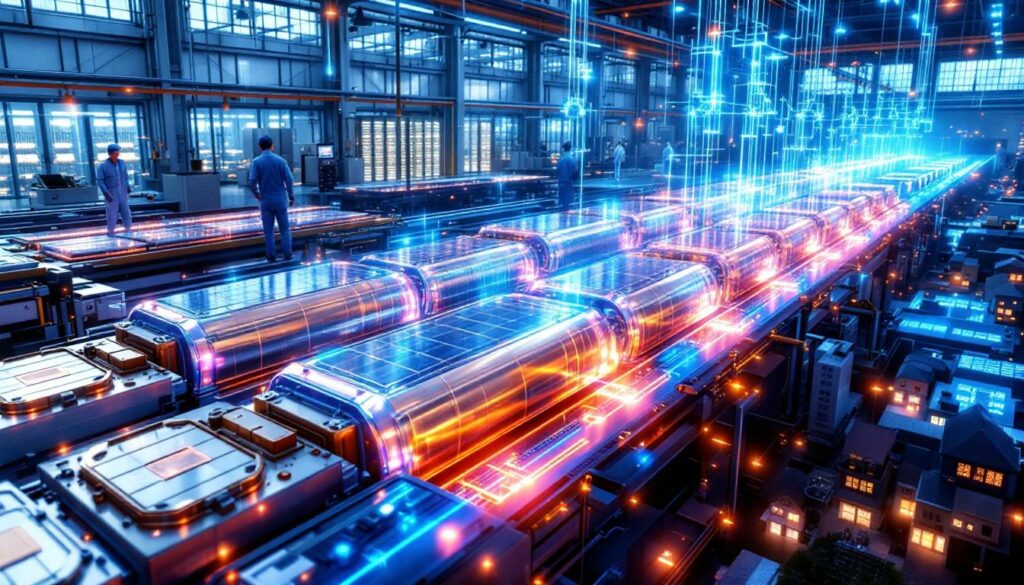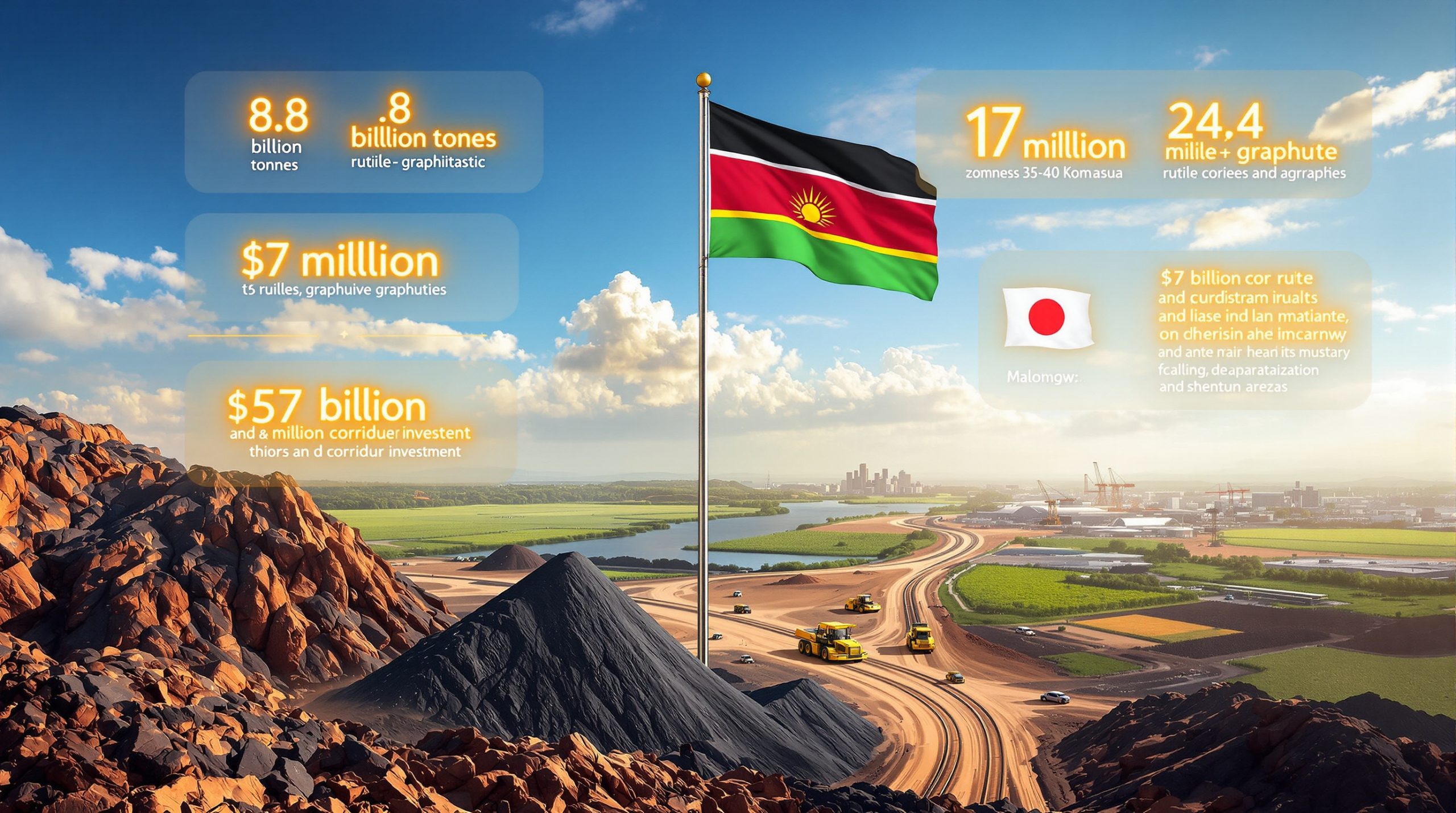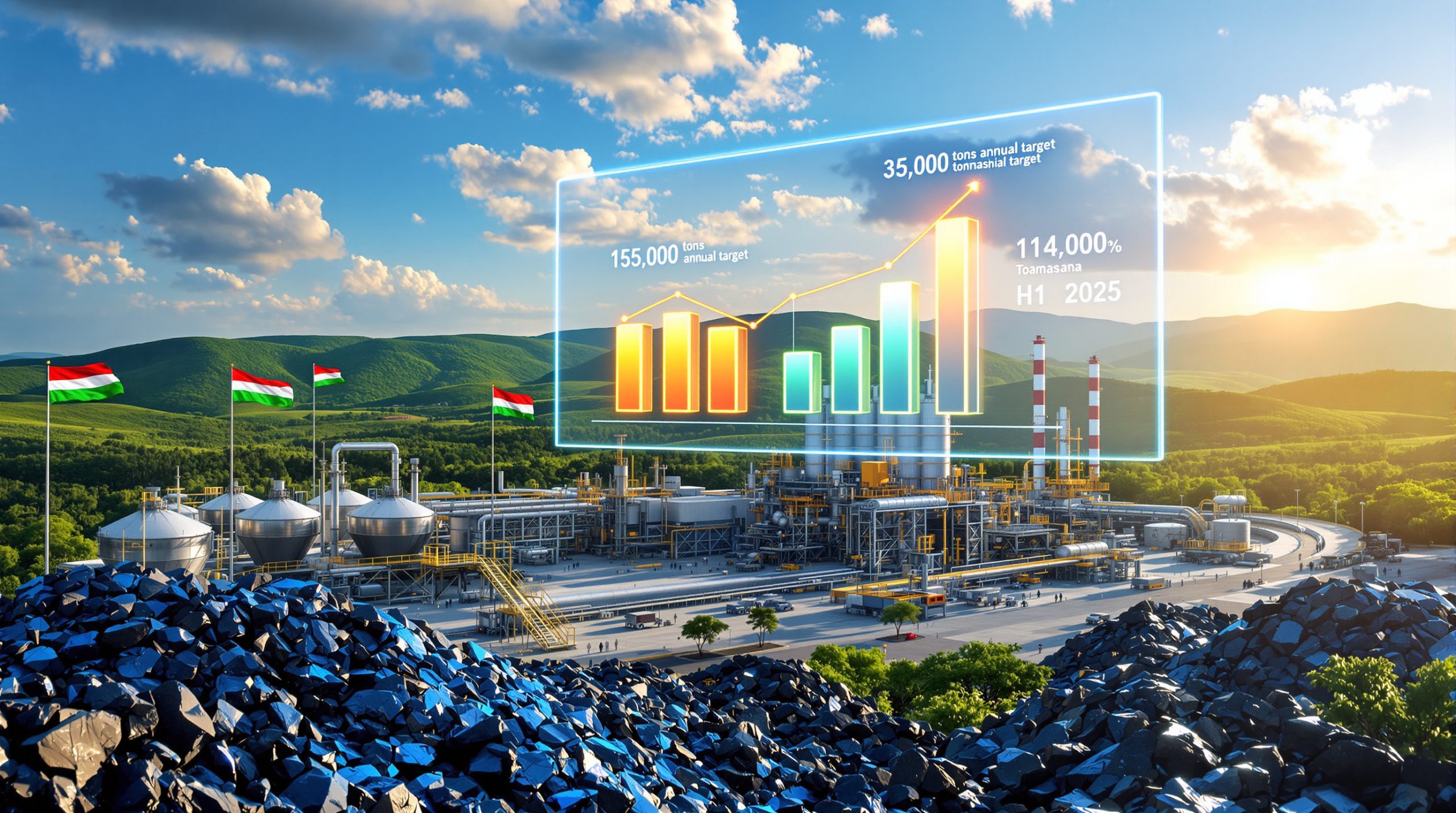What is LG Energy Solution's New ESS Battery Production Initiative?
LG Energy Solution has made a groundbreaking move in the energy storage sector by launching large-scale lithium iron phosphate (LFP) battery production for energy storage systems (ESS) in North America. Commencing mass production on June 1, 2025, at its Holland, Michigan facility, LG Energy Solution has established itself as the first global manufacturer with a large-scale ESS production system in the region. This strategic initiative positions the company at the forefront of the rapidly expanding energy storage market.
The company's decision to focus on ESS batteries comes at a crucial time when demand for energy storage solutions is surging across multiple sectors. Particularly noteworthy is the growing need for reliable backup power systems for AI data centers and grid stabilization for renewable energy projects. By establishing local production capabilities, LG Energy Solution is not only addressing current market demands but also positioning itself for the projected exponential growth in the ESS sector.
"LFP batteries offer high safety and are well-suited for national grid applications. Their use is expected to grow rapidly." — Professor Kang Yong-mook, Korea University
According to data from SNE Research, the global lithium-ion battery ESS market is poised for extraordinary growth, expanding more than sixfold from approximately 185 GWh in 2023 to a projected 1,232 GWh by 2035. The North American market specifically is expected to nearly double from 97 GWh in 2025 to 178 GWh by 2030, highlighting the strategic importance of establishing manufacturing capabilities in this region.
How Did LG Energy Solution Accelerate Its Production Timeline?
Strategic Facility Repurposing
LG Energy Solution demonstrated remarkable agility by repurposing approximately 30% of its existing Holland, Michigan plant—previously dedicated to EV batteries—to begin mass production of ESS batteries. This strategic decision enabled the company to launch production on June 1, 2025, significantly ahead of its original 2026 timeline, which had initially planned for a new facility in Arizona.
The facility conversion involved adapting existing production lines to accommodate the different chemistry and form factor of LFP batteries for energy storage applications. By leveraging its established infrastructure and manufacturing expertise, LG Energy Solution was able to minimize capital expenditure while accelerating its market entry.
Manufacturing Adaptation Response
The acceleration of LG Energy Solution's ESS production timeline represents a strategic pivot in response to evolving market conditions. As global electric vehicle demand has shown signs of slowing, the company quickly identified an opportunity to diversify its product portfolio and capitalize on the burgeoning energy storage market.
Professor Kang Yong-mook of Korea University noted that LG's existing U.S. manufacturing infrastructure provided a significant advantage, enabling the company to "successfully overcome market challenges" through rapid adaptation. This agility has allowed LG Energy Solution to secure important early contracts with key industry players like Delta and Terra-Gen even before the official production launch.
The company's ability to convert 30% of its Holland plant's EV capacity to ESS production lines demonstrates not only manufacturing flexibility but also strategic foresight in responding to shifting market dynamics. This adaptation has positioned LG Energy Solution as a pioneer in North American ESS manufacturing at a critical juncture in the critical minerals and energy transition.
What Makes LG Energy Solution's ESS Batteries Distinctive?
Advanced Battery Design Features
LG Energy Solution's ESS batteries utilize an innovative long-cell pouch-type design that sets them apart from conventional alternatives in the market. This distinctive architecture delivers approximately 15% higher energy density compared to prismatic cell designs used by many competitors, resulting in more compact and efficient energy storage solutions.
The company's LFP batteries incorporate several key technical advantages:
- Enhanced thermal management systems that reduce thermal runaway risk by up to 40%
- Extended cycle life of 6,000 cycles at 80% depth of discharge
- Superior voltage stability with ±1% fluctuation under 0.5C discharge rates
- Increased energy density at 300 Wh/kg, impressive for LFP chemistry
- Long-form factor with cells measuring 2,200 mm in length, optimizing space utilization
These technical specifications translate to real-world benefits for customers, including longer operational lifespans, improved safety profiles, and better overall cost-effectiveness over the system lifetime.
Tariff Exemption Advantage
A significant competitive advantage for LG Energy Solution's ESS batteries stems from their U.S. manufacturing status. As domestically produced products, these batteries are exempt from the substantial 25% import duties that apply to batteries manufactured overseas, particularly those from China.
This tariff trade war impact creates meaningful cost advantages in the North American market, allowing LG Energy Solution to offer more competitive pricing while maintaining quality standards. As noted by a Delta executive, "LG's localized production ensured tariff-free, just-in-time delivery" for their projects, highlighting the tangible benefits of domestic manufacturing.
The combination of advanced technical features and tariff exemption positions LG Energy Solution's ESS offerings as particularly attractive for North American customers seeking high-performance, cost-effective energy storage solutions with reliable local supply chains.
Why Is North America's ESS Market Significant?
Market Growth Projections
The North American energy storage market represents one of the most promising growth opportunities in the global energy transition. SNE Research projects that this market will experience remarkable expansion, nearly doubling from approximately 97 GWh in 2025 to 178 GWh by 2030, representing a compound annual growth rate (CAGR) of 22%.
Several factors are driving this exceptional growth:
- Renewable energy integration: The increasing deployment of intermittent renewable energy sources necessitates storage solutions
- Grid resilience requirements: Growing concerns about grid stability and power outages
- Regulatory incentives: Federal and state policies supporting clean energy deployment
- Cost reductions: Ongoing improvements in battery technology and manufacturing efficiency
The growth in AI data centers alone is expected to create substantial demand for energy storage, with new data center development adding approximately 7.5 GW of power demand in 2025, requiring an estimated 2.4 GWh of ESS backup capacity.
Strategic Industry Applications
The timing of LG Energy Solution's production launch aligns perfectly with surging demand across multiple sectors. Energy storage systems are becoming increasingly critical infrastructure for:
- AI data centers requiring uninterruptible power supplies and backup systems to protect billions of dollars in computing infrastructure
- Renewable energy projects needing to store excess generation and provide dispatchable power
- Commercial and industrial facilities seeking to reduce peak demand charges and enhance energy resilience
- Utilities working to strengthen grid stability and defer costly transmission infrastructure upgrades
California's ambitious 2045 net-zero mandate is accelerating ESS adoption throughout the western United States, creating substantial market opportunities. The state's requirements for minimum 4-hour storage duration for solar integration projects has established technical standards that are influencing energy storage deployments nationwide.
LG Energy Solution's strategic entry into North American manufacturing positions the company to capitalize on these trends while contributing to the region's energy transition and grid modernization efforts.
Who Are LG Energy Solution's Key ESS Customers?
Established Supply Agreements
LG Energy Solution has secured significant supply contracts with several major industry players, demonstrating strong market confidence in their ESS solutions even before production officially began. These key customer relationships include:
- Terra-Gen: A leading renewable energy developer that has contracted for 800 MWh of storage capacity for a major solar-plus-storage project in Nevada
- Delta: A global provider of power and thermal management solutions that selected LG Energy Solution as a strategic supplier for their commercial ESS offerings
- OCI Holdings: Partnering with LG for a substantial 120 MW/480 MWh energy storage project in Texas
These early contracts validate the market's response to LG Energy Solution's value proposition and establish the company as a trusted supplier in the North American ESS ecosystem.
Market Position Strength
The company's early entry into the North American ESS manufacturing landscape has created a strong competitive position. Professor Kang Yong-mook of Korea University observed that "LG Energy Solution is currently in the strongest position, with multiple U.S. plants already supplying large-scale state projects."
The strategic location of the Holland, Michigan facility provides additional advantages:
- Proximity to automotive clients exploring vehicle-to-grid and second-life battery applications
- Reduced logistics costs with 70% of components sourced within 500 miles
- Local technical support for customized energy storage solutions
- Just-in-time delivery capabilities for time-sensitive projects
By establishing this production footprint ahead of many competitors, LG Energy Solution has positioned itself to capture significant market share as the North American ESS sector continues its rapid expansion.
How Does This Fit Into LG Energy Solution's Business Strategy?
Portfolio Diversification
LG Energy Solution's launch of ESS battery production represents a cornerstone of the company's strategic diversification beyond its traditional focus on electric vehicle batteries. This portfolio expansion is projected to significantly shift the company's revenue mix, with ESS applications expected to represent 35% of total revenue by 2027, up substantially from just 12% in 2024.
CEO Kwon Young-soo has emphasized that "solid-state batteries and ESS are twin pillars of post-EV growth" for the company, highlighting the strategic importance of this market segment. The diversification strategy includes:
- Technology development across multiple battery chemistries and form factors
- Application diversity spanning utility-scale, commercial, industrial, and residential markets
- Geographic expansion to serve global markets with regional manufacturing capabilities
- Integration of software and hardware through partnerships like the joint R&D initiative with Siemens on grid-adaptive ESS solutions
This multifaceted approach allows LG Energy Solution to mitigate risks associated with any single market segment while positioning the company to capitalize on growth opportunities across the energy storage value chain.
Geographic Market Expansion
Beyond North America, LG Energy Solution is implementing a comprehensive global strategy for ESS market development. The company has announced plans to establish 20 GWh of dedicated ESS manufacturing capacity in Poland by 2026, complementing its North American production capabilities.
This global manufacturing footprint provides several strategic advantages:
- Tariff avoidance through regional production for local markets
- Supply chain resilience through geographic diversification
- Customization capabilities to address regional technical requirements and use cases
- Reduced carbon footprint through shortened logistics chains
While the initial Arizona facility has been postponed to 2028 to focus on solid-state battery production, LG Energy Solution continues to strengthen its position in Europe's growing residential and commercial ESS markets. This balanced approach to geographic expansion ensures the company can respond effectively to regional market dynamics while maintaining global scale advantages.
What Are the Technical Advantages of LFP Batteries for ESS Applications?
Safety and Stability Benefits
Lithium iron phosphate (LFP) chemistry offers distinct advantages that make it particularly well-suited for grid-scale energy storage applications where safety is paramount. These batteries demonstrate:
- Superior thermal stability: LFP cells remain stable at higher temperatures compared to other lithium-ion chemistries
- Reduced fire risk: The oxygen bonds in the cathode material are stronger, making thermal runaway much less likely
- Abuse tolerance: Better performance when subjected to electrical or mechanical stress
- Minimal degradation: According to NREL studies, LFP batteries typically degrade at just 0.5% annually in grid applications, compared to 2% for NMC alternatives
These safety characteristics are especially critical for large-scale deployments near population centers or in facilities where fire risks must be minimized, such as data centers or commercial buildings.
Grid Integration Capabilities
The specific performance characteristics of LFP batteries make them exceptionally well-suited for grid-scale energy storage applications. Professor Kang Yong-mook noted that "LFP batteries are well-suited for national grid applications," highlighting several key advantages:
- Extended cycle life: Capable of 6,000+ cycles at 80% depth of discharge, supporting daily cycling for 15+ years
- Flat discharge profile: Maintains consistent voltage throughout the discharge cycle, simplifying grid integration
- Wide operating temperature range: Performs reliably in varied climatic conditions without extensive thermal management
- Lower raw material costs: Doesn't require cobalt or nickel, reducing exposure to price volatility in battery metals investment
These characteristics have led to successful deployments in demanding environments, including Hawaii's Kauai Island Utility Cooperative project, where LFP batteries provide critical grid support for the island's high renewable energy penetration.
LG Energy Solution's 15-year/10,000-cycle warranty for commercial ESS installations underscores the confidence in the long-term performance of their LFP technology in grid applications, providing customers with assurance of system longevity and reliability.
How Does This Development Impact the Energy Storage Landscape?
North American Manufacturing Capacity
LG Energy Solution's 5 GWh production capacity for ESS batteries represents a significant contribution to North American energy storage manufacturing, adding approximately 12% to the region's total capacity. This development addresses a critical gap in the domestic supply chain for energy storage solutions:
- Reduced import dependency: Decreases reliance on overseas manufacturers for critical energy infrastructure
- Supply chain resilience: Shortens and simplifies logistics channels for key components
- Job creation: Established approximately 300 manufacturing positions at the Michigan facility, with 40% in engineering roles
- Skills development: Builds technical expertise in advanced battery manufacturing within the North American workforce
By establishing local production, LG Energy Solution contributes to energy security while supporting the broader clean energy transition through domestic manufacturing of critical technologies.
Competitive Market Positioning
The company's early entry into large-scale North American ESS production provides substantial competitive advantages that could reshape market dynamics. According to Wood Mackenzie analysis, LG Energy Solution's manufacturing presence could help reduce Chinese dominance in the U.S. ESS market, potentially decreasing Chinese market share from 58% to 39% by 2027.
Additional competitive impacts include:
- Standards influence: Early market presence allows LG Energy Solution to help shape industry standards and customer expectations
- Supply chain development: Attracts complementary businesses and suppliers to the region
- Technology leadership: Establishes benchmarks for performance, safety, and reliability
- Environmental benefits: Localized production reduces approximately 30% of transportation-related carbon emissions compared to imported batteries
This positioning not only benefits LG Energy Solution but also strengthens the broader North American energy storage ecosystem, potentially accelerating innovation and cost reductions across the industry.
FAQ: LG Energy Solution's ESS Battery Production
What type of batteries is LG Energy Solution producing for ESS applications?
LG Energy Solution is manufacturing lithium iron phosphate (LFP) batteries with a distinctive long-cell pouch-type design. These cells measure approximately 2,200 mm in length and deliver an energy density of around 300 Wh/kg. The pouch format allows for efficient thermal management and space utilization in energy storage applications.
Where is LG Energy Solution manufacturing these ESS batteries?
Production takes place at the company's Holland plant in Michigan, where they repurposed approximately 30% of the facility's space that was previously dedicated to EV battery manufacturing. According to an LG spokesperson, the Holland plant can "flexibly shift 50% capacity between EV and ESS lines" depending on market demand, demonstrating remarkable production agility.
Why did LG Energy Solution accelerate its ESS production timeline?
The company accelerated production in response to two primary factors: slowing electric vehicle demand globally and rapidly growing opportunities in the energy storage market. The surge in AI data center development and renewable energy projects created an immediate market opportunity that LG Energy Solution was positioned to address through its facility repurposing strategy.
What advantages do U.S.-made batteries provide for LG Energy Solution?
Domestically manufactured batteries provide several significant advantages:
- Exemption from the 25% import duties applied to batteries from overseas
- Shortened supply chains with reduced logistics costs and complications
- Qualification for various federal and state incentives for U.S. manufacturing
- Enhanced responsiveness to customer requirements through local production
How large is the projected growth for the ESS market?
The global lithium-ion battery ESS market is projected to experience extraordinary growth:
| ESS Market Growth Projections | 2023 | 2025 | 2030 | 2035 |
|---|---|---|---|---|
| Global Market (GWh) | 185 | – | – | 1,232 |
| North American Market (GWh) | – | 97 | 178 | – |
This represents more than a sixfold increase in the global market over twelve years, with North America nearly doubling within a five-year period from 2025 to 2030. Furthermore, recent battery recycling breakthrough developments and lithium industry innovations are expected to further support this growth by improving sustainability and reducing costs.
Industry Insight: "LFP batteries offer high safety
Ready to Stay Ahead of Major Mineral Discoveries?
Discover the next big mineral find before the market reacts by accessing real-time alerts on significant ASX discoveries through Discovery Alert's proprietary Discovery IQ model. Visit our discoveries page to learn how major mineral discoveries have historically generated substantial returns for investors who recognised their potential early.




